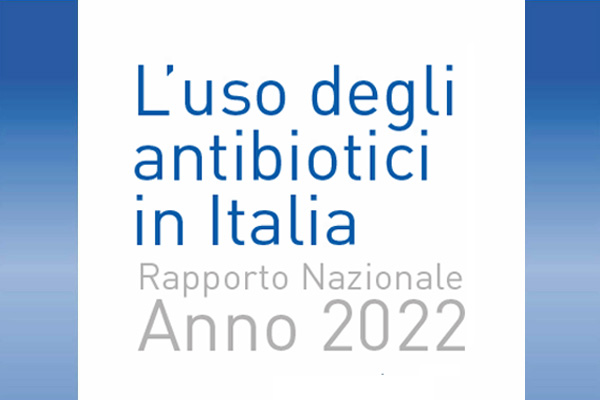.png) Agenzia Italiana del Farmaco
Agenzia Italiana del Farmaco
AIFA publishes the Report "The use of antibiotics in Italy - 2022" - AIFA publishes the Report "The use of antibiotics in Italy - 2022"
AIFA publishes the Report "The use of antibiotics in Italy - 2022"

In 2022, more than 3 out of 10 citizens received at least one antibiotic prescription, with a prevalence that increases with advancing age, reaching 60% in the over-85s, and a 25% increase in consumption compared to 2021, which continues to be recorded even in the first half of 2023.
These are some of the elements that emerge from the Report 'The use of antibiotics in Italy - 2022', by the Medicines Utilization Monitoring Centre (OsMed) of AIFA, published on the Agency's portal.
The analysis on the use of antibiotics in approved care regime also includes a focus on prescriptions in the paediatric and elderly population and on prescriptions of fluoroquinolones in specific population subgroups.
The analysis on the use of antibiotics in the hospital setting instead presents the results of the analysis of the ESAC indicator, relating to the proportion of the consumption of broad-spectrum and/or last-line antibiotics out of the total hospital consumption, and of the Drug Resistance Index (DRI), a summary indicator that combines antibiotic consumption and drug resistance into a single measure, offering a useful tool for quantifying the problem of antibiotic resistance in a specific care setting.
The Report also examines the private purchase of class A antibiotics, the consumption of non-systemic antibiotics, the indicators of prescriptive appropriateness in General Medicine and the use of antibiotics in veterinary medicine.
This new edition also includes a section on training provided to healthcare professionals as part of continuing medical education on antibiotic resistance and care-related infections. Finally, the results of a survey of regional experiences in monitoring antibiotic use are presented, also in line with the National Plan to Combat Antimicrobial Resistance (PNCAR) 2022-2025.
HIGHLIGHTS
In 2022 and the first half of 2023, there was an important increase in the consumption of antibiotics dispensed under approved care regime after the reduction in 2020-2021, linked to containment measures to counter the SARSCoV-2 pandemic. In 2022, there was a 25% increase in consumption compared to 2021.
- In 2022, more than 3 in 10 citizens received at least one antibiotic prescription, with the prevalence increasing with age, reaching 60% in the over-85s.
- Nearly 90% of NHS antibiotic use is provided under approved care regime.
- The highest levels of use are found for men in the most extreme age groups, and for women in the 20-69 age group.
- In the paediatric population, the highest consumption is concentrated in the 2-5 age group, where about 1 in 2 children receives at least one antibiotic prescription.
- 76% of the doses used were provided by the National Health Service (NHS).
- With an overall consumption at national level of 21.2 DDD/1000 inhabitants per day, the differences between regions and geographical areas already observed in previous years are confirmed in 2022, with consumption levels higher in the South than in the North (24.4 vs 18.7 DDD/1000 inhabitants per day).
- In the South there is twice as much expenditure as in the North (19.1 vs. 13.3 euros per capita) due to a higher consumption of antibiotics and the use of more expensive drugs. In the context of the approved care regime, the average cost per DDD in the South is EUR 1.90, higher than in the North (EUR 1.58) and the national average (EUR 1.75).
- Similarly to consumption, the prevalence of use in the South (43.3%) is significantly higher than in the North (28.9%).
- Penicillin combinations, including beta-lactamase inhibitors, continue to be the most widely used antibiotics nationwide in 2022 (around 36% of total consumption).
- In 2022, the worsening trend in the ratio between the consumption of broad-spectrum antibiotics compared to the consumption of narrow-spectrum antibiotics is confirmed, rising from 11.0 in 2019 to 13.6 in 2022. This indicator shows how Italy has an important use of broad-spectrum molecules, which have a greater impact on antibiotic resistance, even higher than in other European countries (13 vs 4).
- The share of Access antibiotics considered first choice (46% of consumption by the NHS) remains below the target (60%) recommended by the WHO.
- Even in the hospital setting there is an increase in the proportion of consumption of broad-spectrum and/or last-line antibiotics in total hospital consumption, placing Italy well above the European average (53.9% vs 37.6 %).
Published on: 17 June 2024

